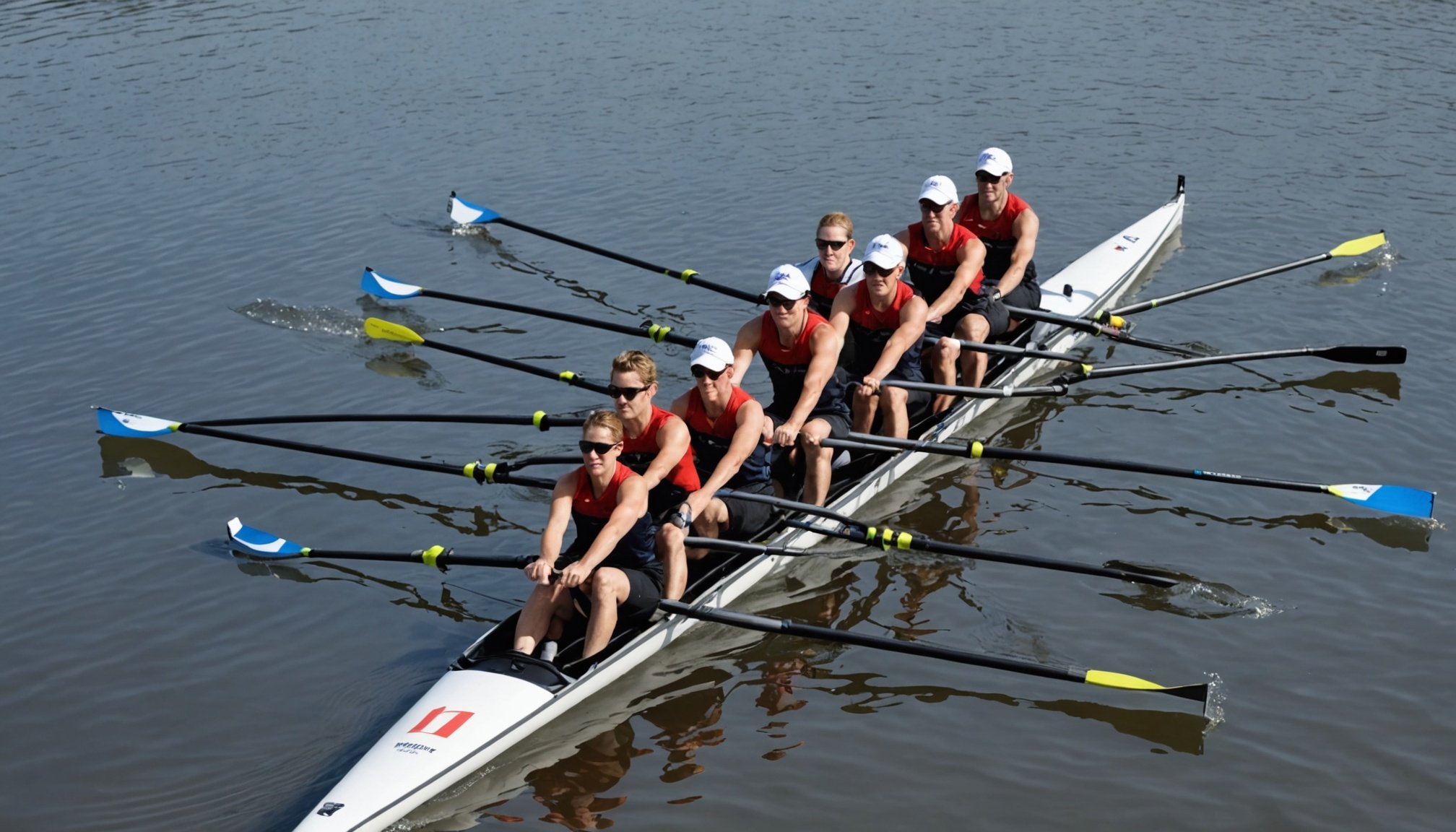Understanding Team Unity in Rowing Clubs
In the world of rowing clubs, particularly within the context of the UK, team cohesion plays a pivotal role in both performance and the overall club experience. Team unity, in this setting, refers to the harmonious collaboration among rowers who must synchronize their actions precisely to propel the boat efficiently. This unity is not just about being in sync physically but also involves shared goals, trust, and effective communication among team members.
The importance of team cohesion in rowing cannot be overemphasized. When a team operates as a unit, the results are evident in enhanced performance, where every stroke contributes optimally to the boat’s speed. This cohesive environment also creates a positive club culture, fostering mutual respect and camaraderie among members. When conflicts and misunderstandings are minimized, athletes can focus more on honing their skills and achieving collective success.
Also to read : Essential stretching strategies for uk athletes to prevent injuries and boost performance
However, UK rowing clubs face unique challenges when it comes to building team unity. Differences in skill levels, personality clashes, and varying levels of commitment can all impede the development of a cohesive team. Furthermore, external factors such as weather conditions can affect training schedules, making consistent team cohesion efforts more complex. Addressing these challenges requires proactive strategies focusing on communication and team-building activities.
Effective Techniques for Enhancing Team Cohesion
Creating unity in a rowing team involves using various strategies for team unity, emphasising collaboration and communication to achieve optimal cohesion.
Have you seen this : Transforming sports training: how virtual reality is shaping the future of uk athletic teams
Communication Strategies
Open lines of communication are crucial among crew members to ensure smooth operation and understanding within the team. Encouraging a culture where every rower feels comfortable sharing thoughts can reduce misunderstandings. Regular team meetings are another strategy for enhancing team unity. These meetings provide an opportunity for feedback and personal connection, reinforcing the bonds between crew members. Furthermore, implementing communication tools such as messaging platforms or dedicated apps can facilitate daily updates, ensuring all team members are informed and aligned with the team’s goals.
Collaborative Training Practices
Group training sessions designed to foster teamwork are invaluable. For instance, incorporating paired and group exercises into rowing drills can significantly enhance team dynamics. Evaluating these training sessions allows coaches to identify strengths and areas for improvement, ensuring ongoing cohesion development. By focusing on teamwork during practice, rowers learn to adapt, anticipate each other’s movements, and build synchronization critical to successful rowing.
Team-Building Activities
Off-water team-building events can also play a significant role in fostering relationships and trust. Social gatherings, like barbecues or team dinners, allow team members to bond outside the competitive environment. Additionally, friendly competitions and group challenges offer not just fun but also the chance to solidify trust and camaraderie within the team.
Real-Life Success Stories from UK Rowing Clubs
In exploring case studies of UK rowing clubs, one club stands out for its impressive achievements in fostering team cohesion. This club not only excels in tournaments but is also a model of unity among its members.
One key to their success is the implementation of practices that enhance teamwork and camaraderie. For instance, the club organises frequent team-building activities that extend beyond the water. These activities range from social gatherings to collaborative workshops focused on building trust and communication. This approach allows members to bond in various settings, strengthening their relationships both on and off the water.
Testimonials from club members highlight improved dynamics as a result of these efforts. Many have noted how mutual support and understanding have contributed to a more harmonious and effective team environment. As one member stated, “The enhanced cohesion we’ve achieved has been crucial in our regatta successes.”
The club has also faced challenges in their journey, providing valuable lessons in unity enhancement. Early struggles with communication were addressed through structured feedback sessions, fostering an environment where all voices are heard. By learning from these failures, the club has continually improved its strategies, solidifying its reputation as a rowing club success.
Implementing and Sustaining Techniques for Cohesion
Fostering a sustainable rowing team is a journey requiring focus on unity and lasting strategies. These methodologies nurture a team culture that embraces both present and future goals.
Creating a Culture of Support
A proactive approach involves developing mentorship roles within the club. Seasoned members guide newcomers, ensuring their integration and advocating for a supportive team spirit. The club can promote inclusivity by organising team-building activities that appeal to everyone involved. Recognising achievements through awards or acknowledgment programs not only celebrates individual accomplishments but reinforces collective morale. Such initiatives encourage long-term unity strategies, resulting in a robust and enthusiastic team environment.
Measuring Success and Gathering Feedback
Effective cohesion is often invisible; thus, measuring it requires ingenuity. Employing tools to assess team cohesion and morale, such as feedback surveys, provides invaluable insights. Regularly scheduled surveys can help monitor team dynamics, allowing for reflection and adjustment. Tailoring ongoing practices based on member feedback is essential. This adaptability promotes sustainability in rowing teams, enhancing the overall training environment.
Long-term Commitment to Team Development
Long-lasting development arises from selfless dedication to shared visions and values. Continual training workshops centered around unity harness team relationships. Engaging alumni as mentors showcases communal commitment, offering guidance and nurturing strong connections within all club members.











